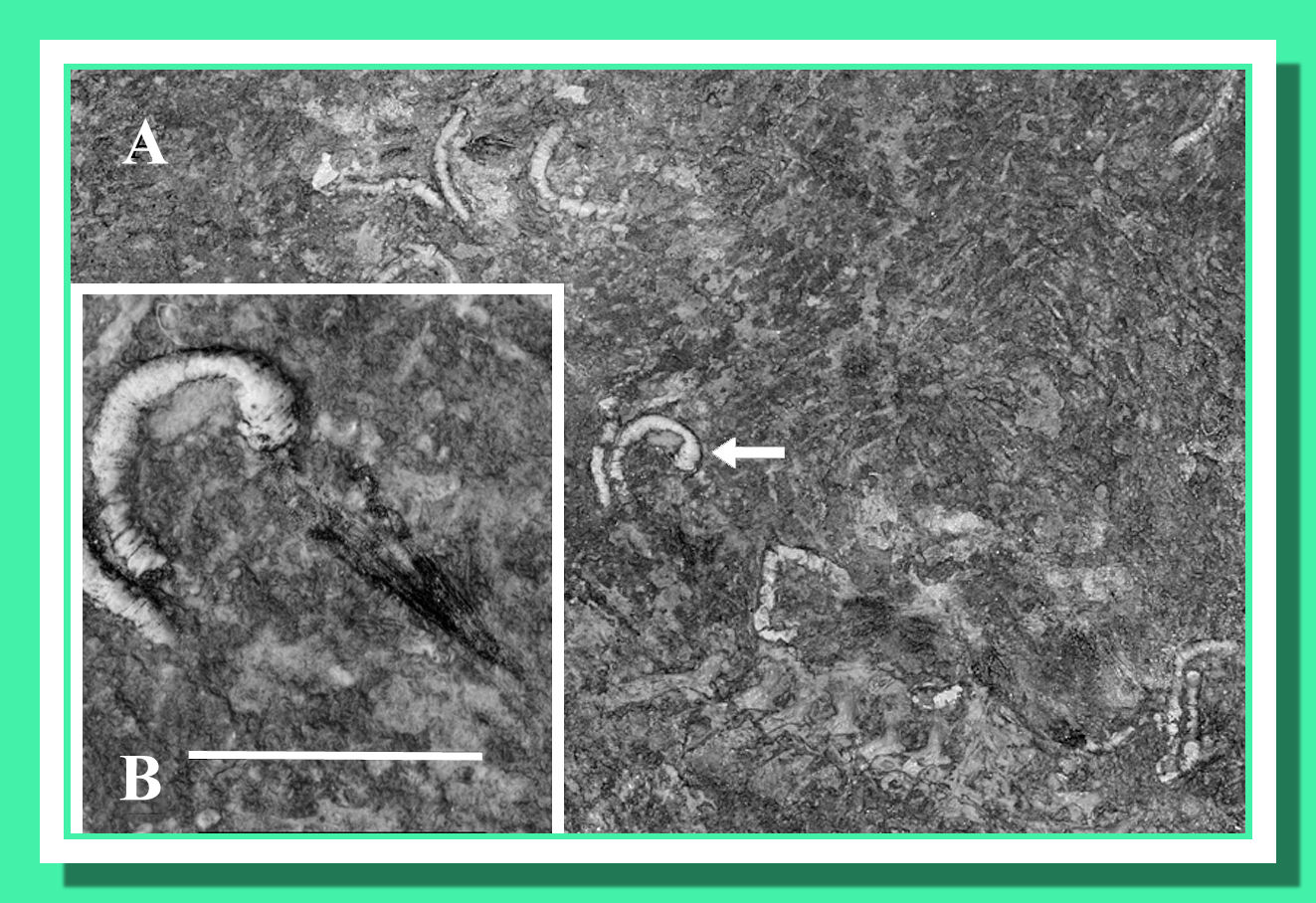Exceptional preservation of embryos in the Middle Triassic actinopterygian Saurichthys, from Monte San Giorgio, Switzerland
by This email address is being protected from spambots. You need JavaScript enabled to view it. (1) & This email address is being protected from spambots. You need JavaScript enabled to view it. (2)
(1) Department of Structural and Functional Biology, Università degli Studi dell'Insubria, via Dunant 3, I-21100 Varese, Italy.
(2) Museo Cantonale di Storia Naturale, viale Cattaneo 4, CH-6900 Lugano, Switzerland.
New excavations in the famous Monte San Giorgio area, close to the historical sites where the Cassina beds crop out (Lower Meride Limestone, Ladinian), have been started in 2006 by the Museo Cantonale di Storia Naturale, Lugano (Stockar, this volume).
The new outcrop consists of an almost 3 m thick interval of mainly interbedded finely laminated, organic-rich shales and limestones with intercalated thicker bituminous micritic and marly limestones deposited in oxygen-depleted bottom water. Along with sauropterygian fragmentary remains, the new excavations yielded many complete and well preserved specimens of the large (up to 0.5 m standard length) predatory actinopterygian fish Saurichthys (mainly S. curionii, but S. macrocephalus is also present), along with other smaller fishes like Archaeosemionotus, Eosemionotus (not previously reported from these beds), and Peltopleurus.
Among the prepared specimens, four specimens of Saurichthys contain embryos, and in one specimen (MCSN 8016, Fig. 1a) sixteen very small embryos (skull mean length 6 mm) are present. These latter show a peculiarity not reported so far for other Saurichthys embryos: each skull is associated with a tiny, narrow and elongate structure which, at higher magnifications (Fig. 1b), appears as a short and narrow cylinder, either curled or comma shaped. The nearly one-to-one association between the embryonic skulls and the narrow cylinders suggests that they represent some postcranial structure of the embryos.
Chemical investigation (Renesto & Stockar, 2009) revealed the phosphatic nature of these structures. Phosphatization may occur for soft parts if the microenvironmental conditions around the carcass are modified by bacterial activity. The size and length of these structures with respect to the associated skulls are compatible with the axial musculature and recall the morphology of embryos of extant fishes, so that the curled narrow cylinders may represent the fossilized musculature of the embryos, and each segment may correspond to a somite. A SEM (Scanning Electron Microscope) observation confirmed the metameric structure of the cylinder. This discovery is of particular relevance because fossil embryos with preserved soft parts are extremely rare. In addition, although viviparity had previously been described for Saurichthys, the new specimens are rather better evidence and add further support to this reproductive mode.

Figure 1. Saurichthys curionii. A: Body cavity of MCSN 8016 with preserved embryos; B: High magnification detail of the embryo indicated by arrow. Scale bar: 0.5cm
References
Renesto S. & Stockar R. 2009: Exceptional preservation of embryos in the actinopterygian Saurichthys, from the Middle Triassic of Monte San Giorgio, Switzerland. Swiss Journal of Geosciences 102, in press.
All text and pictures are published with permission of Museo Cantonale di Storia Naturale di Lugano
All Rights Reserved © by Museo Cantonale di Storia Naturale di Lugano
Un grazie ai buoni uffici di Sergio Pezzoli di Evolution.
Questo studio e' stato presentato al 5th International Symposium on Lithographic Limestone and Plattenkalk - Naturhistorisches Museum Basel, August 2009
